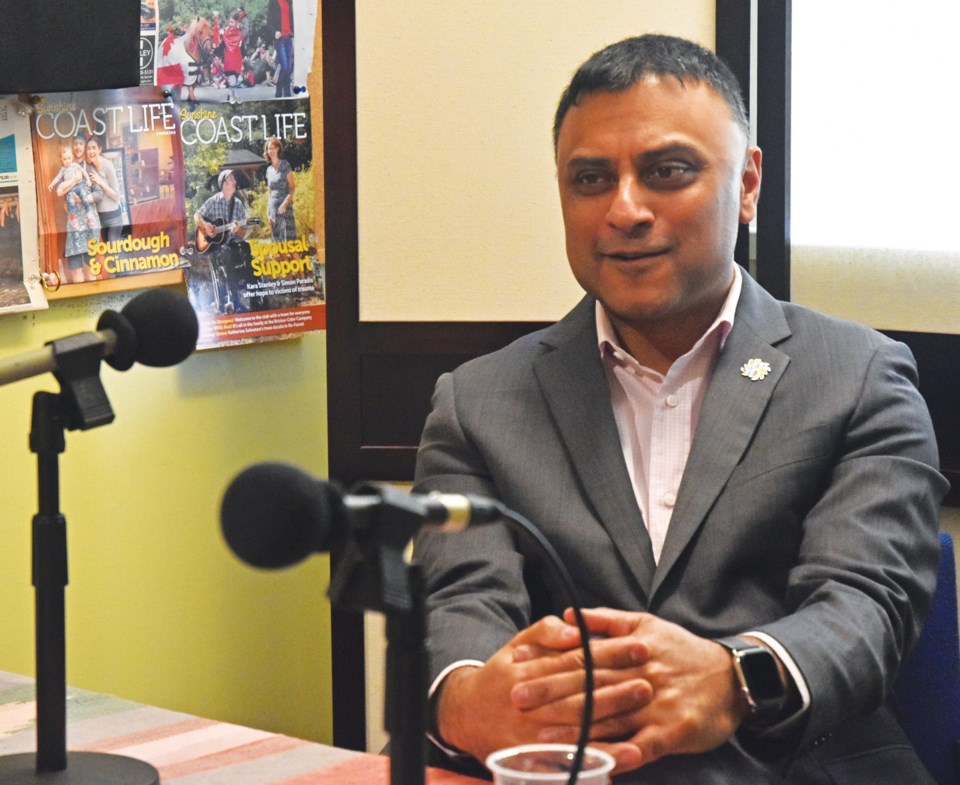Andrew Chunilall, CEO of Community Foundations of Canada (CFC) visited the Sunshine Coast from Ottawa on Jan. 28, at the invitation of Sunshine Coast Community Foundation.
Chunilall, who has a background in education, commerce and economics, has been CEO of the organization since 2017. CFC is the national network that oversees Canada’s 191 local community foundations, which pool donations and other resources and then reinvest them in their communities.
“[He] really has his finger on the pulse of a lot of the trends that are affecting community foundations,” said Wendy Francis, executive director at Sunshine Coast Community Foundation when asked what prompted her organization to invite him.
In an interview with Coast Reporter, Chunilall and Francis weighed in on the trends affecting how and why people donate.
Aging demographics, increased immigration, a globalized world and technology are the trends affecting Canada generally, but they also translate to how the community foundation on the Sunshine Coast operates, Chunilall said.
“Immigration is critical to a community like this because immigrants tend to be younger, they are entrepreneurs, they are innovators, the creators. Not only do they occupy jobs but they create jobs and opportunities,” said Chunilall, who called immigration a “key focus area for the Sunshine Coast.”
On the giving side, Francis said the “vast majority” of those who are making donations to the Community Foundation or starting endowments “are definitely from the older demographic.” She said they are either business owners or are retired, or those who have assets based on selling their home. “Right now I think we’re still benefitting from that older generation,” she said, before noting that demographics are changing on the Coast.
That older population also influences the organization’s decisions on which groups to support, such as the Community Services Society, the Hospital Foundation, the Seniors Activity Centre and other organizations and events that address issues of isolation. “We are at both ends of that conversation, trying to address those changes,” Francis said.
She also said that younger generations are “looking at different ways of being philanthropic.” The foundation has a youth legacy fund aimed at supporting projects for youth, which they are working to grow.
Chunilall said the pattern of earning money young and donating old is shifting. He said young people don’t necessarily think in terms of giving or donations, but rather invest in values, seeking means of growing business while pursuing social outcomes. “They are showing up as social entrepreneurs, they are creating social businesses. It’s a hybrid,” he said.
Technology is also changing the giving landscape. Emerging platforms such as GoFundMe operate as private companies, using technology to advance a new business model focused on philanthropy. “It causes us to think about how we need to rework the institutions that we have,” said Chunilall.
That’s because these private companies are able to raise equity, invest in technology and can afford the costs associated with research and development, which is a difficult task in the not-for-profit space, said Chunilall. “Under charity law we are supposed to use the vast majority of the resources that we raise on charitable purposes and research and development is not considered a charitable purpose.” This, he said, “handcuffs” charities since it stalls innovation, and puts them at a competitive disadvantage.
“If our regulators aren’t paying attention, if we’re not advocating, then charities do run the risk of losing their relevancy in advancing social outcomes and priorities important to community because we don’t have the right type of regulatory framework,” he said.



